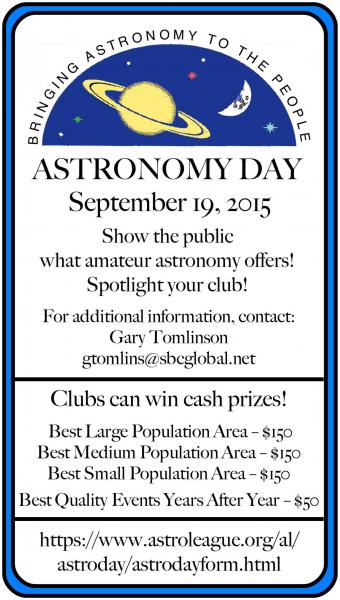Dennis di Cicco wins NERAL 2015 Walter Scott Houston Award!
It is my great pleasure to announce that, by unanimous vote of the NERAL Executive Committee, the Walter Scott Houston Award of the North East Region of the Astronomical League (NERAL) is being awarded to Dennis di Cicco of Sudbury, Massachusetts at this year’s Stellafane Convention in Springfield, Vermont on Saturday evening, August 15, 2015.
Dennis di Cicco’s famous award winning photograph of the Sun’s analemma in the 1970s was a milestone in his astrophotography career. A long time Stellafane devotee, he was inspired to build his own backyard observatory which he would put to good use for many decades to come. He was recognized for his observational talents in 1997 with the Astronomical League’s Leslie C. Peltier Award for his significant observations of minor planets, lunar & planetary astronomy, and general astronomy. In 1978 he was presented the Clifford W. Holmes Award at Riverside Telescope Makers Conference Astronomy Expo for his work popularizing astronomy.
Since then he has gone on to make great contributions as a writer and Senior Editor for CCD Astronomy quarterly and most notably for Sky & Telescope Magazine from 1974 through 2014. His generosity in sharing his knowledge in articles, equipment test reports, eclipse trips and talks with the amateur astronomy community at clubs and star parties across the country makes him a star on our earthly sphere for which we are extremely grateful.
On Behalf of the North East Region of the Astronomical League, we are very pleased to give this award to this amateur astronomer, astrophotographer and writer who used the professional world to promote and increase the visibility of astronomy for our community.
Congratulations, Dennis!
Very sincerely,
Maryann Arrien
Chair: NERAL – The North East Region of the Astronomical League
www.neral.org







